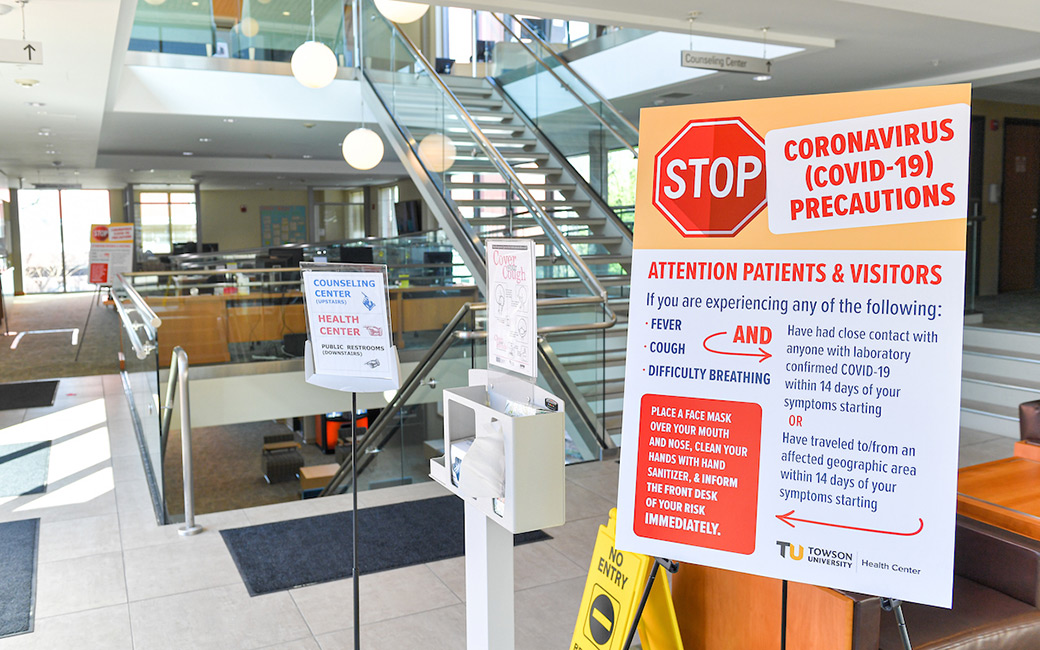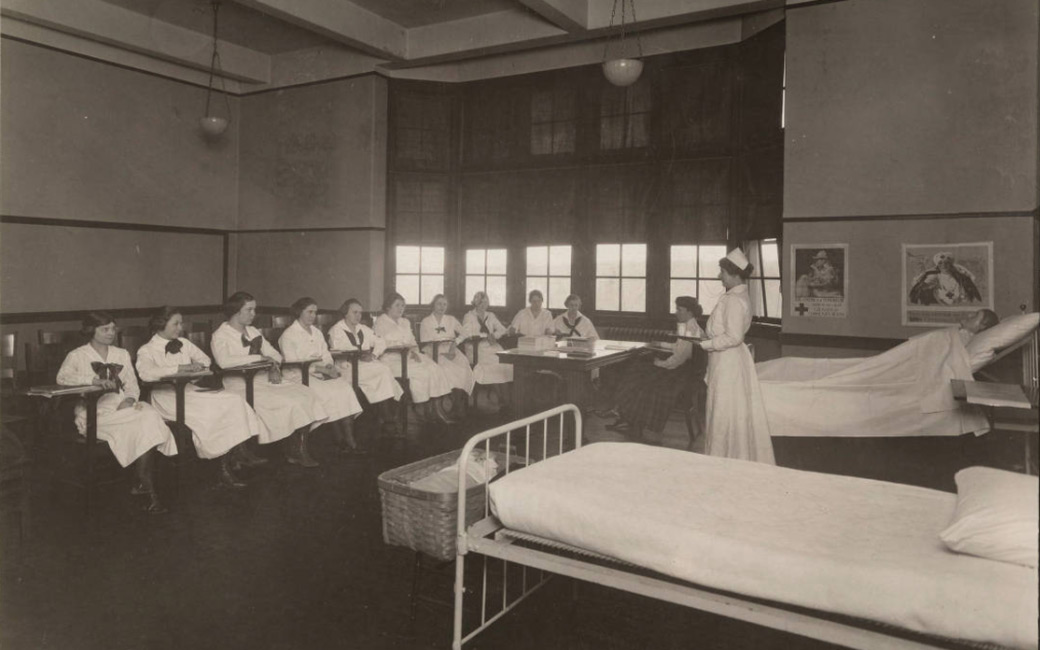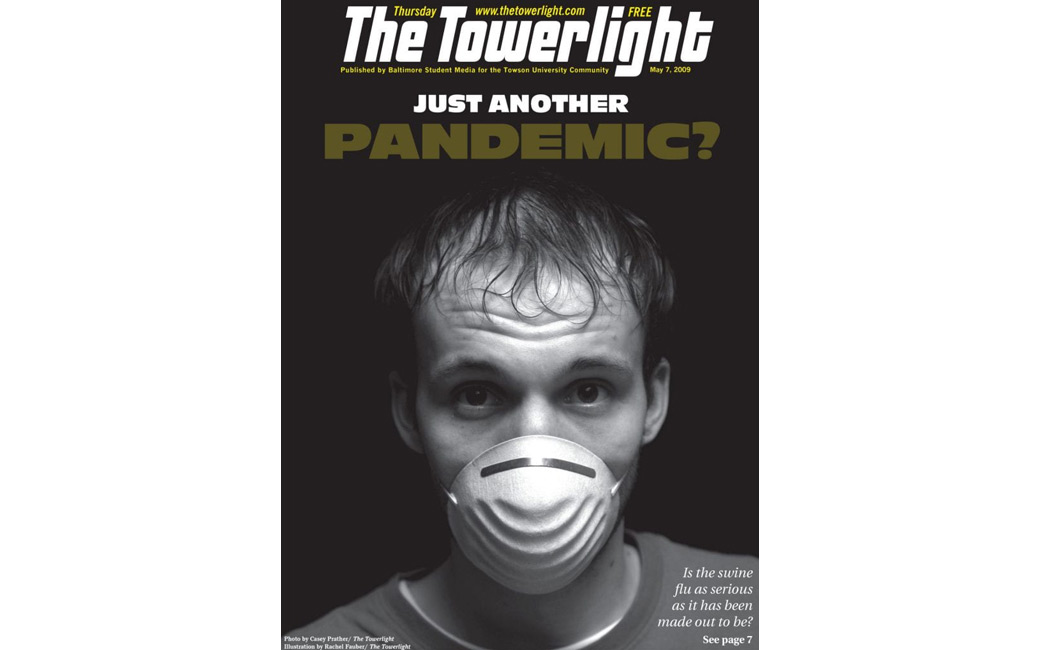Through the ages: Honors class, University Archives study historic pandemics
An Honors College course is studying the history of disease; meanwhile, the University Archives has compiled a history of disease at TU.
By Rebecca Kirkman and Cody Boteler on April 17, 2020

In its almost 155-year history, Towson University’s community has witnessed a number of pandemics. While COVID-19 is one of the most extreme health crises that has affected TU, it is, perhaps, the first time students have been taking a course on the history of infectious disease during a pandemic.
Cindy Ghent, an associate professor in the department of biological sciences, is teaching such a course this term as an Honors College seminar.
“It’s completely timely,” says Ghent. “We have some really good conversationswith a mix of science majors and non-science majors.”
The course, which is being taught for the first time at TU, started with some basics on epidemiology and how diseases spread and is now looking through history through the lens of infectious disease and how science has evolved, Ghent says.
That means students have done everything from discussing the ethics of Edward Jenner—the physician who contributed to the development of a smallpox vaccine—to comparing the themes in popular movies such as “Contagion” and “Outbreak.”
“It is a perfect way for students to relate course concepts to what’s happening now,” Ghent says.
Felicity Knox, library associate in TU’s Special Collections and University Archives looks at the past as a window to the present.
Knox co-authored a blog with Peyton Cleary, an Albert S. Cook Library Leadership Institute student (A-LIST), looking at how TU interacted with pandemics before.
“When the first cases of the H1N1—the so-called “Spanish Flu”—began showing up in the United States in the summer of 1918, there were concerns about how many people hospitals could treat and advice about social distancing,” the pair wrote.
It was declared an epidemic in October of that year and eventually killed 40 million people worldwide.
The blog said volunteers made masks for the general public to wear, hoping to stem the continued contagion. Similar to what’s happened in 2020, Baltimore City shut down services including public schools, theaters, stores and churches.
Towson University was known then as the Maryland State Normal School and had only moved to its Towson campus three years earlier. The U.S. had recently joined World War I and about 130 students, all female, were enrolled.
The blog said University Archives “have no records about the emotional impact the school felt from the 1918—1919 pandemic.”
An equivalent of The Towerlight did not exist and no notes from faculty meetings of the time mentioned flu. There is no suggestion in the notes that either students or faculty members were infected.
“There was, however, some change in the school curriculum, most likely influenced by both WWI and the flu outbreak,” Knox and Cleary wrote. “In both the 1918–1919 and 1919–1920 school years, a two-year ‘Domestic Science’ program was introduced that included classes in “Hygiene,” “Home Nursing and First Aid,” “Laundering" and “Household Chemistry and Bacteriology.”

Ghent says she doesn’t know a lot about the circumstances of that particular pandemic in and around the Towson area, but she is not surprised the school instituted classes and programs in response.
“Towson has always been very proactive and forward-thinking; I would have expected them to do something like that, to see the need and find a way to fill it,” she says.
In the spring of 1957, a new flu strain showed up in Asia and trekked its way across the globe. An estimated one million people were killed by H2N2 worldwide but mostly in Asia.
TU was then known as the State Teachers College at Towson with an enrollment of slightly more than 1,300 students. The blog said at this point, The Towerlight existed, and its archives suggest concern about H2N2 was low, with just two stories about it at the time.
Another flu, H3N2, began emerging from Asia in the summer of 1968. The war in Vietnam meant soldiers ultimately spread this virus, just as they had in 1918. One million people across the globe died of that virus.
Knox and Cleary said the H3N2 virus impacted what had become Towson State College in small ways. The pair found a February 1970 Towerlight interview with campus physician Dr. Phelan about the flu's impact on campus. He told the student newspaper that the Health Center was treating about 100 students a day for respiratory symptoms. The article ends, "Dr. Phelan says it is not possible to isolate a patient with the flu to prevent the spreading of the infection since others have been exposed by the time the victim shows symptoms himself."
In 2009, a new strain of the H1N1 virus was declared an international public health emergency and had a larger impact on young people who did not have antibodies to previous H1N1 strains.
As a result, TU took proactive steps to combat the disease, including potential plans to close the university. In the fall of that year, when students returned to campus, those who displayed flu-like symptoms were put into quarantine in the basements of Prettyman and Scarborough Halls. They had to remain there until their temperatures remained under 100 degrees for 24 hours.

Knox and Cleary wrote, “During past pandemics, institutions like TU have responded in drastic and meaningful ways, showing their dedication to keep students and staff safe and healthy. TU’s response to the COVID-19 pandemic has been no different in the sense that the safety and health of the TU community was and continues to be prioritized.”
Ghent, who lived through the pandemic in the ‘70s and was teaching at Towson University during the swine flu pandemic in 2009, calls it a privilege to be able to teach a course on the history of infectious disease in the Honor College.
“This isn’t a course that students are going to get anywhere else,” she says. “I try to teach it in a way to make something that’s meaningful.”